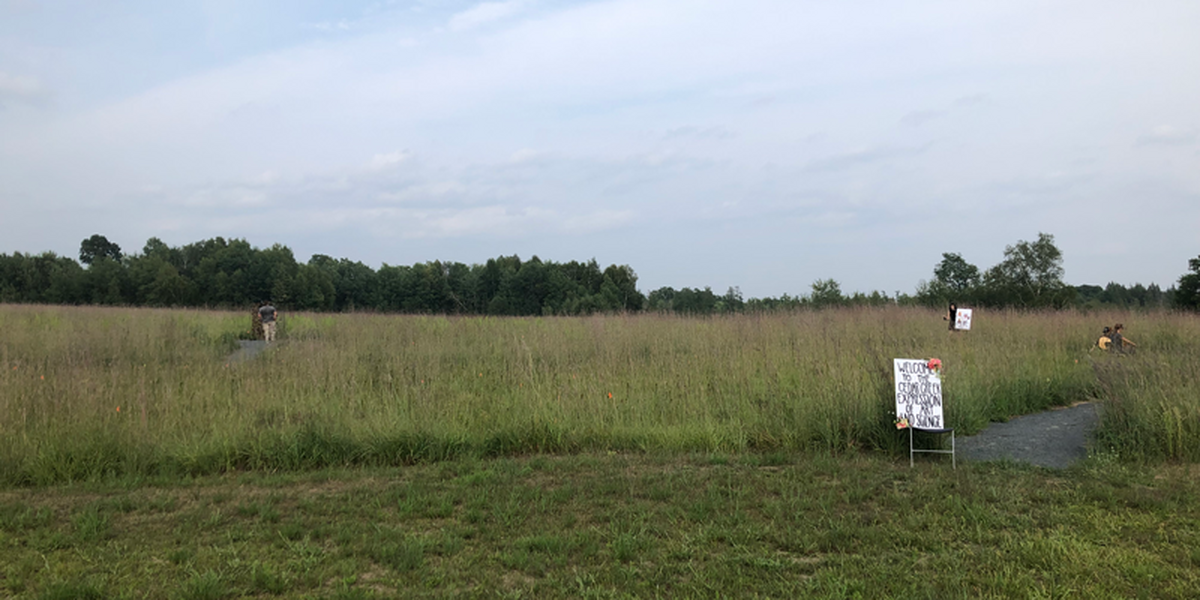
On a pleasant August evening, several dozen folks milled around the prairies surrounding the Lindeman Center at Cedar Creek Ecosystem Science Reserve. They gathered on the new Minnesota Ecology Walk for an art show organized by summer interns and graduate students.
Given Cedar Creek’s growing artist-in-residence program — the presence of an art show is not an oddity — but the artists themselves made the event especially unique. It was the first time interns, students and staff took center stage.
Rose Paredes, one of the organizers of the event, dabbled with art in her free time but until this event had never shared her work with anyone. “The interconnectedness of art and science is often overlooked,” said Paredes. “By organizing this art show, I wanted to explore this interconnectedness myself and help peers do that as well.”
The art on display took many shapes and forms from string instruments to portraits. For the vast majority of participants, it was the first time they shared their works with others.
For Caitlin Barale Potter, Cedar Creek’s Education and Community Engagement Coordinator who supported the planning process, the event gave a chance for the scientists to shine outside of a research setting. “One of our core tenets at Cedar Creek is the fact that scientists are people with interests, skills, and experience both in their scientific field and outside of it,” she said. “The creative talents of our scientific community are quite impressive but not always shared broadly.”
Although you might have missed the in-person event, get a flavor of the show with a few pieces. —Claire Wilson
Madison Meissnest
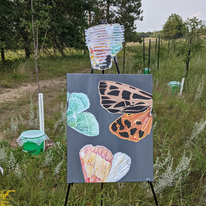
Big Bio intern and Environmental Engineering student at the University of Colorado at Boulder.
All the insects in these paintings are found around Cedar Creek. Meissnest featured them because she wanted to bring attention to their beauty — something often overlooked by those passing by. She also hoped to spark conversations with people about how they benefit their surrounding ecosystems and support human well-being.
Gillian Meyers
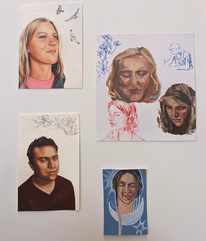
Big Bio intern originally from Oxford, MS. She attends Georgetown University, where she majors in Science, Technology, and International Affairs. Portrait of summer interns alongside their favorite aspects of nature. Meyers used mixed media (acrylic, pen, and colored pencil) to create the portraits.
Adam Weber
Big Bio intern from Wyoming, MI. Weber attends Michigan Technological University with a double major of Wildlife Ecology and Conservation and Applied Ecology and Environmental Sciences.
Combining his dual passion for fantasy and the natural world, Weber created a series of fictional wizards inspired by vegetation encountered on the Cedar Creek property. He used India ink and water to create wizards based on two types of grass and a sedge found at Cedar Creek. There is Cenchrus of the Sands (based on Cenchrus ciliaris), Andropogon the Cruel (Andropogon gerardi), and Carex the Grey (Carex sp.).
Lauren Latter
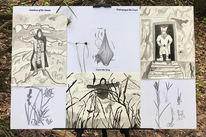
Lauren is from Minneapolis and spent this summer working in the Forest and Biodiversity Lab. She attends the College of Biological Sciences at the University of Minnesota, majoring in Ecology, Evolution, and Behavior.
Using a fine-tipped pen, Lauren drew levels of the canopy based on her work with trees to depict patterns of nature and the importance of diversity. She combined zentangles, a sketching method that relies on meditation, and ecology to bring together the interconnectedness of nature.
Rose Paredes
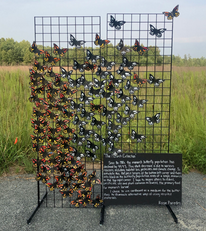
Rose is a part of the Big Bio team and is originally from California. She attended the University of California, Los Angeles and majored in Anthropology with a minor in Environmental Science.
Paredes created an installation made of over a hundred monarch butterflies from recycled cardboard that represent the decline of their population since the 1980s For Paredes, learning more about their life cycle, migration and threats while seeing them flutter between prairie plants left an impression. The piece starts at the bottom left corner and ends with the single butterfly on the top right representing their decline over the years.